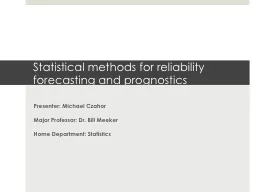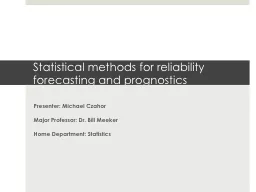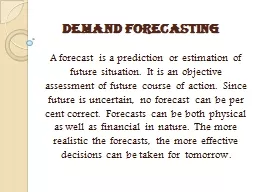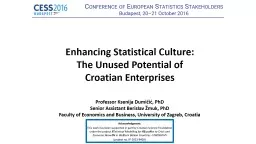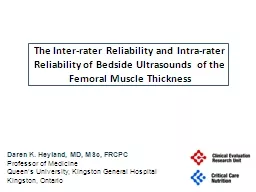PPT-Statistical methods for reliability forecasting and prognos
Author : myesha-ticknor | Published Date : 2017-08-17
Presenter Michael Czahor Major Professor Dr Bill Meeker Home Department Statistics A Brief Background Drexel UniversityBMES Dept Rowan UniversityMathematics Statistical
Presentation Embed Code
Download Presentation
Download Presentation The PPT/PDF document "Statistical methods for reliability fore..." is the property of its rightful owner. Permission is granted to download and print the materials on this website for personal, non-commercial use only, and to display it on your personal computer provided you do not modify the materials and that you retain all copyright notices contained in the materials. By downloading content from our website, you accept the terms of this agreement.
Statistical methods for reliability forecasting and prognos: Transcript
Download Rules Of Document
"Statistical methods for reliability forecasting and prognos"The content belongs to its owner. You may download and print it for personal use, without modification, and keep all copyright notices. By downloading, you agree to these terms.
Related Documents

